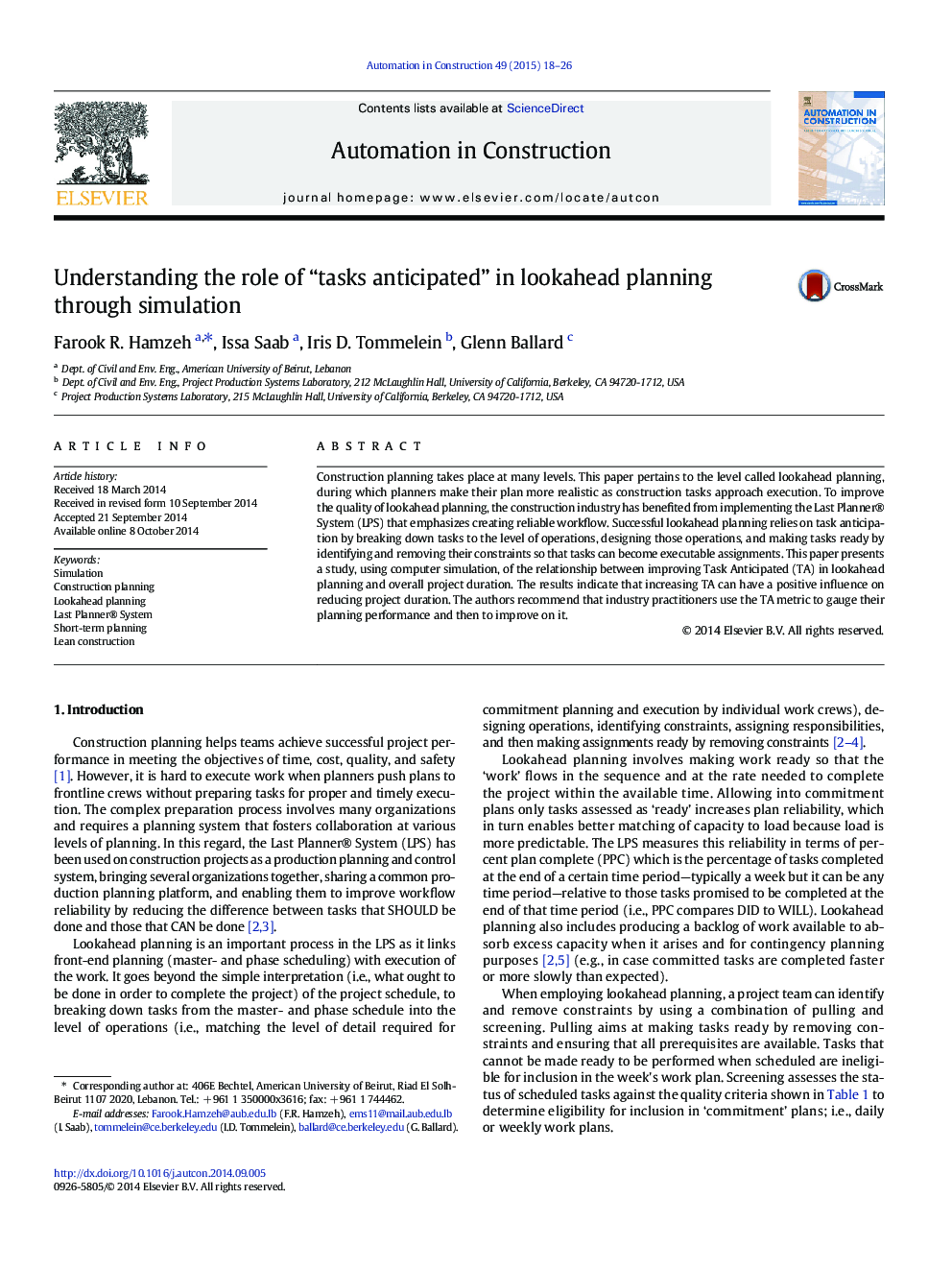| Article ID | Journal | Published Year | Pages | File Type |
|---|---|---|---|---|
| 246504 | Automation in Construction | 2015 | 9 Pages |
•Mathematical and simulation modeling for lookahead and weekly work planning in construction•Simulating the process to study the impact of lookahead planning on planning reliability•Changes in tasks anticipated (TA) may have an impact on the project duration.•TA values can increase to reach a certain threshold ceiling.•The threshold ceiling is a function of project uncertainty and the type of tasks.
Construction planning takes place at many levels. This paper pertains to the level called lookahead planning, during which planners make their plan more realistic as construction tasks approach execution. To improve the quality of lookahead planning, the construction industry has benefited from implementing the Last Planner® System (LPS) that emphasizes creating reliable workflow. Successful lookahead planning relies on task anticipation by breaking down tasks to the level of operations, designing those operations, and making tasks ready by identifying and removing their constraints so that tasks can become executable assignments. This paper presents a study, using computer simulation, of the relationship between improving Task Anticipated (TA) in lookahead planning and overall project duration. The results indicate that increasing TA can have a positive influence on reducing project duration. The authors recommend that industry practitioners use the TA metric to gauge their planning performance and then to improve on it.
